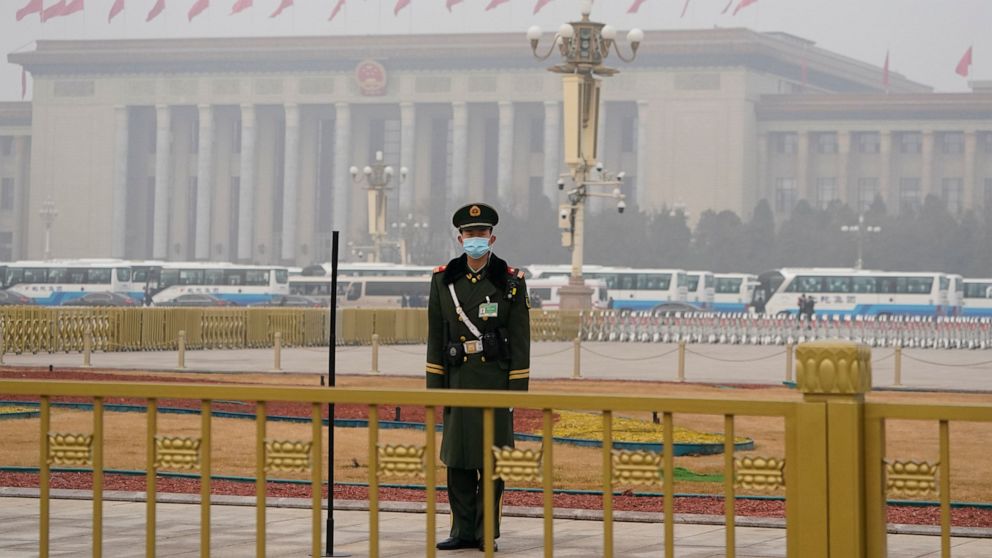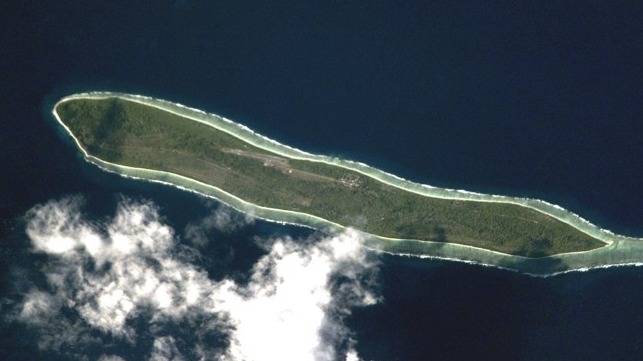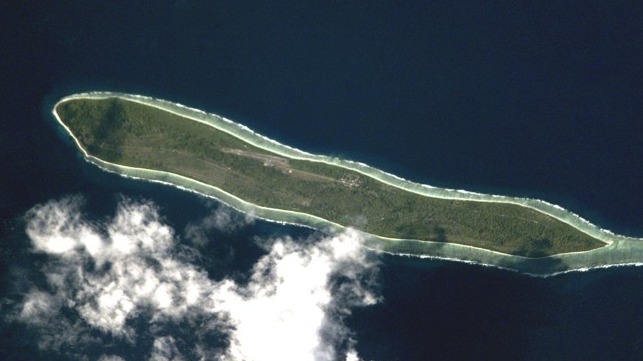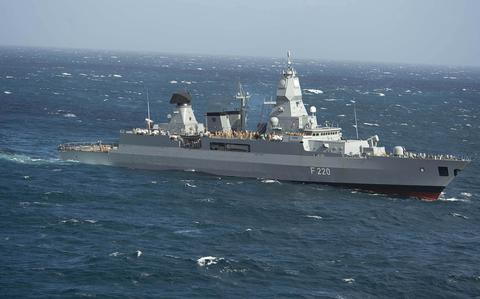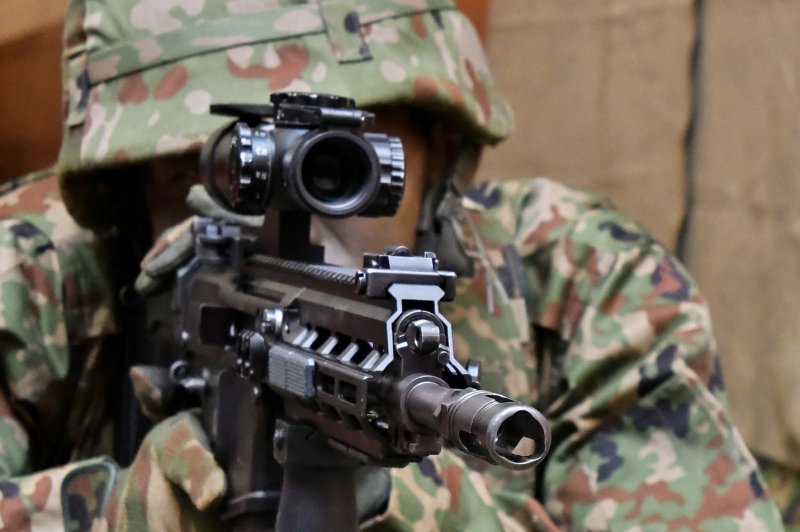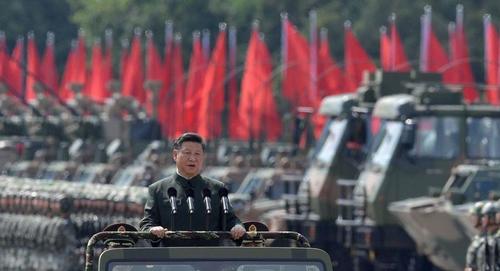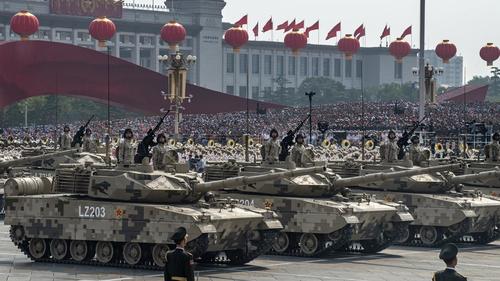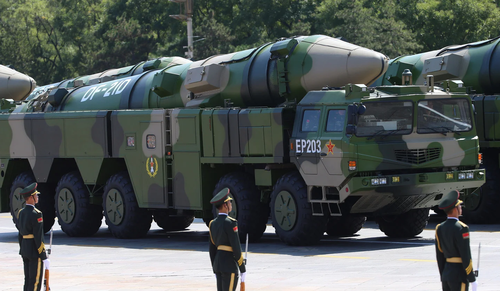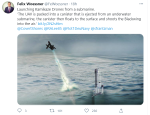US to build anti-China missile network along first island chain
Exclusive: Indo-Pacific Command requests to double spending in fiscal 2022
Independence-variant littoral combat ship USS Gabrielle Giffords launches a naval strike missile during exercise Pacific Griffin in the Philippine Sea. The NSM is a long-range, precision strike weapon that is designed to find and destroy enemy ships. (Photo courtesy of the U.S. Navy)
RYO NAKAMURA, Nikkei staff writerMarch 5, 2021 01:00 JSTUpdated on March 5, 2021 06:35 JST
WASHINGTON -- The U.S. will bolster its conventional deterrence against China, establishing a network of precision-strike missiles along the so-called first island chain as part of $27.4 billion in spending to be considered for the Indo-Pacific theater over the next six years, Nikkei has learned.
They form the core proposals of the Pacific Deterrence Initiative that the U.S. Indo-Pacific Command has submitted to Congress and Nikkei has reviewed.
"The greatest danger to the future of the United States continues to be an erosion of conventional deterrence," the document said. "Without a valid and convincing conventional deterrent, China is emboldened to take action in the region and globally to supplant U.S. interests. As the Indo-Pacific's military balance becomes more unfavorable, the U.S. accumulates additional risk that may embolden adversaries to unilaterally attempt to change the status quo."
Specifically, it called for "the fielding of an Integrated Joint Force with precision-strike networks west of the International Date Line along the first island chain, integrated air missile defense in the second island chain, and a distributed force posture that provides the ability to preserve stability, and if needed, dispense and sustain combat operations for extended periods."
The first island chain consists of a group of islands including Taiwan, Okinawa and the Philippines, which China sees as the first line of defense. Beijing's "anti-access/area denial" strategy seeks to push American forces out of the East and South China seas within the first island chain.
Two U.S. Marine Corps AH-1W Super Cobra helicopters fly over Clark Air Base in the Philippines. The Philippines are part of the so-called first island chain. (Photo courtesy of the Department of Defense)
China also seeks to keep U.S. forces from approaching the
"second island chain" in the Western Pacific, which runs from southeastern Japan out to Guam and south to Indonesia.
The Indo-Pacific Command submitted an investment plan for fiscal 2022 through fiscal 2027 to Congress this month.
For fiscal 2022, it has requested $4.7 billion, which is more than double the $2.2 billion earmarked for the region in fiscal 2021, and is close to the roughly $5 billion Washington has spent annually on dealing with Russia.
The six-year total of $27.4 billion represents a
36% increase over planned spending for that period as of fiscal 2020, reflecting growing alarm over Chinese activity surrounding Taiwan and the East and South China Seas.
In a speech at the Washington-based think tank American Enterprise Institute on Thursday, Adm. Philip Davidson, commander of U.S. Indo-Pacific Command, said there are concerns about the next six years as a period when China may look to change the status quo in the region, such as with Taiwan.
He said there is "a fundamental understanding that the
period between now and 2026, this decade, is the time horizon in which China is positioned to achieve overmatch in its capability, and when Beijing could, 'could,
' widely choose to forcibly change the status quo in the region."
"And I would say the change in that status quo could be permanent," he said.
The plan is structured to "focus resources on vital military capabilities to deter China," according to the document. "The requirements outlined in this report are specifically designed to persuade potential adversaries that any preemptive military action will be too costly and likely to fail by projecting credible, combat power at the time of crisis," it says.
The proposal will be followed by discussions with lawmakers and with countries that would be involved in its implementation. China has in the past objected to U.S. attempts to place missile shields in allied countries, notably in South Korea.
The
U.S. has about 132,000 troops stationed in the Indo-Pacific, according to a Japanese defense white paper.
The investment plan features "highly survivable, precision-strike networks along the first island chain" as a central element. This would mean
expanded use of land-based batteries with conventional missiles, as the military has ruled out the use of nuclear warheads on such short- and medium-range missiles.
The guided-missile destroyer USS Chafee launches a Block V Tomahawk in the Pacific Ocean. (Photo courtesy of the U.S. Navy)
The U.S. has long based its China strategy around its naval and air forces. During the 1996 Taiwan Strait Crisis, the U.S. dispatched aircraft carriers to project overwhelming military strength as a deterrent.
China's now holds a diverse missile arsenal with an eye toward blocking a U.S. military advance within the second island chain. This has made the U.S. strategy hinging on the Navy and Air Force less feasible.
China is strong in ground-based, intermediate-range missiles. While China holds an arsenal of 1,250 such missiles, according to the Pentagon, the U.S. has none.
This gap owes to the Intermediate-Range Nuclear Forces Treaty, which banned the development of ground-based missiles with ranges between 500 km and 5,500 km. The agreement expired in 2019.
"The INF Treaty unnecessarily constrained the United States," Sen. Jim Risch, the ranking Republican member of the Senate Foreign Relations Committee, told Nikkei in a written interview.
The deployment of intermediate range missiles in the Indo-Pacific "is a great and increasingly necessary area of discussion for the United States and Japan to explore," Risch said.
A network of missiles countering China in the Indo-Pacific region "would be a plus for Japan," said a senior Japanese government official. This official said Tokyo has not discussed such a move with Washington.
An F/A-18F Super Hornet conducts flight operations over Mt. Fuji in Japan. The 55,000 U.S. troops in Japan represent the largest contingent of American troops abroad. (Photo courtesy of the U.S. Navy)
American land, sea and air forces are stationed in Japan under the two countries' bilateral security treaty, which obligates Washington to defend Japan if it is attacked. There are now about
55,000 U.S. troops stationed in Japan, the largest contingent of American troops abroad.
U.S.
forces in Japan do not currently maintain missiles that could reach China. Japan's Defense Ministry has been building up its own long-range missile capabilities in the Nansei Islands, which include Okinawa.
But placing U.S. missiles on Japanese soil would be fraught with difficulty. Because such a move would affect the division of roles between the American military and Japan's Self-Defense Forces, Tokyo and Washington would need to discuss the details of any proposed deployment, including the locations and range of the missiles.
An opportunity is likely to come during negotiations on host-nation support for fiscal 2022 onward. Missile deployment "could be discussed as we talk about the course of the Japan-U.S. alliance," a senior Foreign Ministry official said.
A decision by Japan to host American missiles would be certain to anger China, complicating diplomacy between the two economically intertwined neighbors. And Tokyo is likely to encounter local opposition around potential deployment sites, including in Okinawa, where around 70% of American forces in the country are concentrated.
Budget concerns may arise as well. Washington "could ask us to shoulder maintenance and other costs associated with missiles deployed in Japan," a Defense Ministry official said.
Additional reporting by Yukio Tajima in Tokyo.
Posted For Fair Use
Exclusive: Indo-Pacific Command requests to double spending in fiscal 2022

asia.nikkei.com










